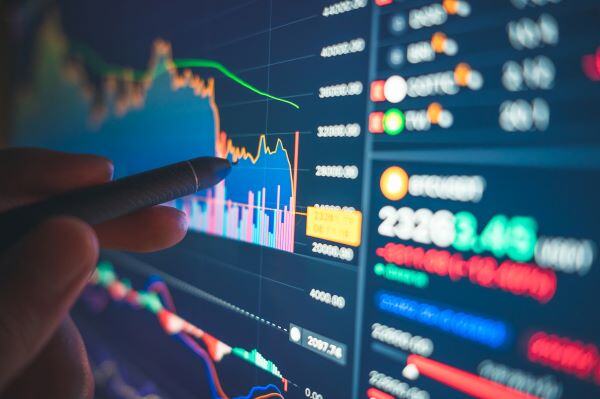
Which house is cheaper: the one that costs $200k or $1 million?
It seems simple enough, right? But before you answer, you’re probably sensing there's a catch, and you're right. There's one critical question you need to ask first: "What's the square footage?" If the $200k house is 1,000 sq ft ($200/sq ft) and the million-dollar home is 10,000 sq ft ($100/sq ft), the expensive-looking house is actually half the cost per square foot.
This simple example illustrates the critical difference between price and value—something most intuitively grasp in real estate but rarely apply to stocks. Just like comparing price per square foot, investors evaluate stocks using ratios like price per some comparable metric across companies (the way a sq ft is consistent across houses). This something could be a dollar of earnings (profits), sales, cash flow, or book value, etc. The exact metric isn't critical; what's important is that it allows us to gauge relative VALUE across unique stocks. A stock trading at 20 times earnings (a 20 P/E) would be considered more expensive than one trading at 10, all else equal.
Of course, it’s never that simple. Houses with higher prices per square foot might be in better neighborhoods, have newer finishes, or offer premium features. Similarly, stocks might command higher valuations if investors expect faster growth, better management, or geographic advantages.
Yet, there’s always a point where pricing can stretch too far. Just as buyers might eventually question paying $1 million for a modest home in California when they could get twice the size in Texas, investors may reconsider whether U.S. stocks at a 28 P/E compared to international stocks at a 18 P/E have become too expensive (a 50% premium).

International vs. U.S.: Is a New Cycle Starting?
It might still be early, but signs are emerging that international stocks are finally breaking out compared to the U.S., signaling what could be a meaningful shift in global market leadership.
The Trump administration is aggressively reshaping global trade policies, introducing tariffs on various goods and pressing other countries for concessions. Beyond trade, there's also a push for other nations to step up their own military spending, reflecting the administration’s belief that the U.S. has carried too much of the global defense burden without sufficient return.
Whether these policies are beneficial long-term is up for debate, but their immediate impact is undeniable. Countries around the globe are hearing the message loud and clear, and they're reacting:
• Germany announced major investments in defense.
• Numerous countries are reshoring investments previously outsourced abroad.
• China is shifting its economic model towards domestic consumption, acknowledging it can't rely indefinitely on American consumers to fuel its growth.
Simply put, the U.S. is effectively compelling other nations to spend more domestically, just as it seeks to reduce its own spending and tackle the deficit. While only time can tell if these decisions are ultimately wise, the stock market’s job is to vote now.

 Why is this important?
Why is this important?
For several years, international stocks have been cheap relative to U.S. equities, but lacked a catalyst to justify investors making a major shift. Now, policy changes and shifts in global economic activity could provide exactly that catalyst. The significant valuation gap between U.S. and international stocks makes this potential shift even more compelling.
Historically, market leadership between U.S. and international stocks has swung back and forth in cycles. The chart below illustrates these alternating periods of dominance clearly. If history repeats itself, this might be the start of a fresh cycle favoring international equities.
 In short, international markets might be gearing up to take the lead again after a long period of U.S. dominance, making global diversification not just prudent but potentially rewarding in the years ahead.
In short, international markets might be gearing up to take the lead again after a long period of U.S. dominance, making global diversification not just prudent but potentially rewarding in the years ahead.
The "Magnificent 7" — Are Expectations Too High?
Another shift worth highlighting involves the dominance of the "Magnificent 7"—Apple, Amazon, Nvidia, Microsoft, Meta, Google (Alphabet) and Tesla. These companies are massive, innovative, and make products and services deeply woven into our daily lives. Naturally, investors have rewarded them with lofty valuations.
However, recently we're seeing money move away from these seven giants and back into the other 493 stocks in the S&P 500. While there could be many reasons behind this rotation, valuation certainly plays a significant role. At some point, even outstanding companies can become overly expensive as the chart shows (Forward PE is like PE but uses expected earnings rather than last years).
 It's premature to declare an end to the Magnificent 7’s market leadership. They remain exceptional companies, with visionary products and some of the brightest minds in business. But investing isn't just about owning great companies, it's about buying them at the right price. Sometimes the most rewarding investments aren't in stocks that go from great to sensational, but rather from overlooked to just "good enough."
It's premature to declare an end to the Magnificent 7’s market leadership. They remain exceptional companies, with visionary products and some of the brightest minds in business. But investing isn't just about owning great companies, it's about buying them at the right price. Sometimes the most rewarding investments aren't in stocks that go from great to sensational, but rather from overlooked to just "good enough."
Found this insightful? Share the knowledge with your friends, family, and colleagues – let’s start a conversation about the future of investing!
PAST PERFORMANCE IS NOT A GUARANTEE OF CURRENT OR FUTURE RESULTS. Examples of historical information included in this presentation do not, nor are they intended to, constitute a promise of similar future results. Specific client portfolio allocations, risks and returns can and may deviate from these examples depending on accounts and types of investments available through each account. Future market views by WJ Interests, LLC may vary significantly from the historical examples presented herein and no one receiving this summary should assume that WJ Interests, LLC will be able to replicate successful views in the future.








